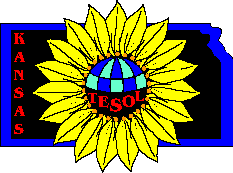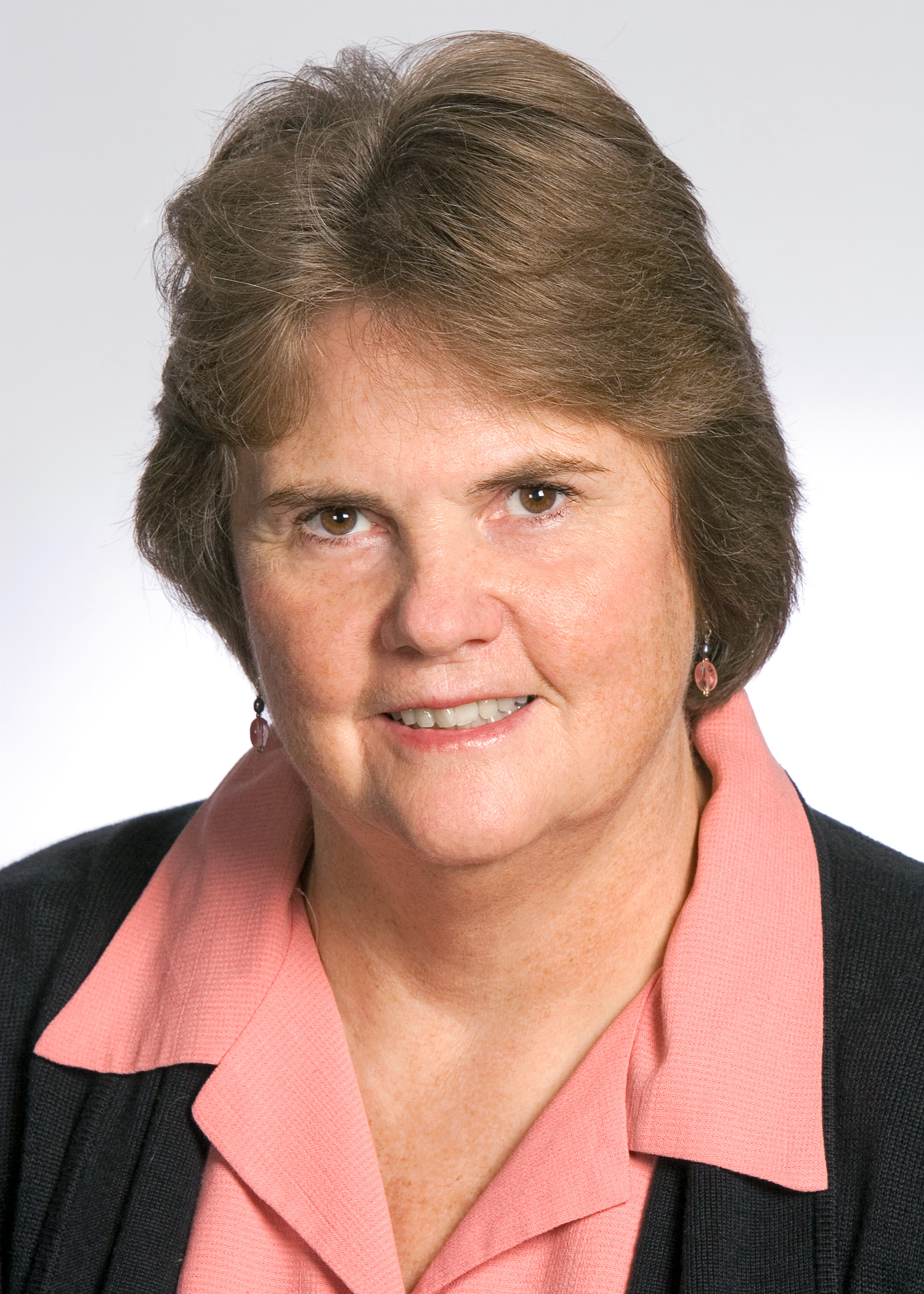
Winter 2005-2006
Preview of KATESOL 2006
Diane Larsen-Freeman
Bruce Veldhuisen
Intensive Programs Rebound
![]()
/ Index /
/ Letters /
/ Profiles /
/ Search /
![]()
Subscribe
for free!

Diane Larsen-Freeman
New ESL MiniConference Profile
1. What is your main ESL activity now?
My day job is directing the English Language Institute, and being a Professor of Education and of Linguistics at the University of Michigan, roles which keep me plenty busy. I am also a Distinguished Senior Faculty Fellow at the School for International Training in Vermont, where I have taught for 25 years. At Michigan’s ELI, we teach English for Academic Purposes, train graduate student instructors, develop and administer a large-scale international English proficiency testing program, and manage a 1.8-million word, digitized corpus of academic spoken English (MICASE). Recently, we have undertaken several new initiatives. One is offering a 6-course ESL Endorsement Program to help general education teachers prepare to work effectively with English language learners in their public school classes. The other is creating and implementing a second language acquisition research agenda on emergentism, some of which will be reported on in a forthcoming special issue of the journal Applied Linguistics, which I am co-editing with Professor Nick Ellis, newly of the ELI.
I am also involved in two publishing projects presently. The first is co-authoring a book for Oxford University Press with Lynne Cameron. Its working title is Complexity Theory and Applied Linguistics. In it, we make the case for conceiving of language as a CAS (a complex adaptive system). Seeing language thusly highlights its dynamism, its nonlinearity, and its emergent nature. This characterization of language has important implications for language learning, language teaching, and discourse analysis, we believe.
The second publishing project involves my directing a new edition of Grammar Dimensions: Form, Meaning, and Use, the four-volume grammar series published by Heinle/Thomson. This will be its 4th edition—such projects seem never-ending, but I am grateful that this is so.
I think all my burners are front ones, at the moment.
2. How did you start your ESL related career?
I started as a Peace Corps Volunteer in 1967 teaching EFL in a government secondary school in Sabah, Malaysia. I taught a “bridge” class, a year-long program designed to move students from Chinese or Malay-medium instruction to English-medium. Because I was trained in the audiolingual method, I used the ALM to instruct my Malaysian students. My classroom was filled with students performing dialogues and rapid fire drilling (using the red and the green books). Of course, I supplemented this approach with skits, role plays, picture compositions, anything else I could think of, and then, when it rained, writing compositions (because raining falling on the tin, corrugated roof of my open-air classroom made it impossible to hear).
I returned from Malaysia, feeling very positive about my experiences and about the relationships I had established, but with a nagging feeling that I had not served my students’ learning as well as I might. I had learned to teach, but I was not sure that I really understood much about teaching. After a brief excursion into the business world, where I earned a good salary, but did not receive the satisfaction that comes from teaching, I decided to pursue my Masters degree in Linguistics at the University of Michigan. At Michigan, I learned many things from my professors, among them, Kenneth Pike and H. Douglas Brown and from ELI lecturers such as Joan Morley. I’ll never forget the day when Doug Brown came to class all excited about the new concept of “interlanguage.” He predicted, correctly as it turned out, that interlanguage would have an enduring influence on the way that we think about language learning. It was at that time that I resolved to complete my Ph.D. in linguistics, specializing in second language acquisition, an area of inquiry that fascinates me still today, decades later.
I also taught classes at the University of Michigan’s English Language Institute, the first such institute in North America. The ELI was established in 1941 by Charles Carpenter Fries, and later directed by his junior colleague, Robert Lado, so I am sure that they were early influences on me as well. From my studies and teaching at Michigan, I came to realize that there was no one best language teaching method. Without a recipe for teaching to follow, I became aware of the fact that there were many decisions to be made as a classroom teacher and that I would be helped to make them by becoming informed about the choices I did have and by being conscious at any particular moment about what I was doing and why I was doing it.
The realization that my decisions needed to be as informed as possible led me to reach out to others. I joined the international TESOL association. I will never forget the exhilaration that I felt in attending my first TESOL convention in 1974, and I have not missed one since. I felt that I had found a professional home!
After graduating from Michigan, I joined the faculty in the TEFL Program at UCLA, where I was privileged to teach along side ESL luminaries Cliff Prator, Don Bowen, Russ Campbell, Evelyn Hatch and Marianne Celce-Murcia, with whom I was to later collaborate on The Grammar Book. John Schumann came to UCLA the same year as I did, and Bill Rutherford, Jackie Schachter, Dave Eskey, and Steve Krashen were at USC, so I profited from many stimulating conversations with all these colleagues.
By now in my career, I was comfortable as a teacher. I did indeed feel that I had learned to teach. Nonetheless, after moving to Vermont, I discovered that I had much to learn from my SIT colleagues, dedicated as they were to excellence in teaching. I stayed at SIT for almost 25 years, so you can see that I had a great deal to learn! In fact, I might say that what I was doing in addition to earning my living was learning teaching. Even though the prescriptivists might frown upon my use of a gerund after the verb “learn,” it makes sense in terms of the semantics of the gerund. I was no longer preparing to do something; I was experiencing it, and I was learning a great deal from the experience.
3. What are some of the language/culture backgrounds with which you are most familiar?
I would have to say Malaysian first, perhaps Mexican second, as I have spent a fair amount of time at various points in my career in both countries. Actually, though, I have been privileged to work with people from a number of language/culture backgrounds within the U.S., as well as those that I have encountered in my travels (over 50 countries), mostly in order to speak at professional conferences. I find that I never stop learning from my students and colleagues. My language students keep me humble because they are always challenging my current hypotheses about how they learn. From my students, who are teachers in training, I get daily opportunities to work on how to educate awareness.
4. If you had to give three pieces of advice to a new teacher working with English language learners, what would these be?
Listen and watch what your learners have to tell you—-even when they are not aware that they are giving you information. Fall in love with your students’ learning by cultivating an attitude of inquiry. An attitude of inquiry is a good antidote to ward off burnout. Get involved with a professional association and converse with your colleagues—-you don’t have to tackle the challenges of teaching alone.
5. What do you see as the most important issues facing the ESL/EFL language teaching profession today?
Helping mainstream teachers cope with the ever-growing numbers of immigrant students in U.S. public school classrooms so that the new arrivals are able to learn English while not falling behind in their content lessons.
Training teachers and developing materials to address the world-wide move to teach English to younger and younger learners in EFL settings. To these I would add the challenge of working with young people in this country who find their way into language teaching, not having had much language training upon which to build.
Preventing ESL/EFL teachers from dropping out when demands on them are enormous and when their salaries are often modest compared with what they could earn pursuing more lucrative careers.
Learning to speak clearly and convincingly about the work that we do to the powers that be—-both in our schools and on our campuses, and in the greater public domain. It is important work, and public advocacy is essential to its success.
Interview by Robb Scott
2006 ESL MiniConference Online

Robb@ESLminiconf.net